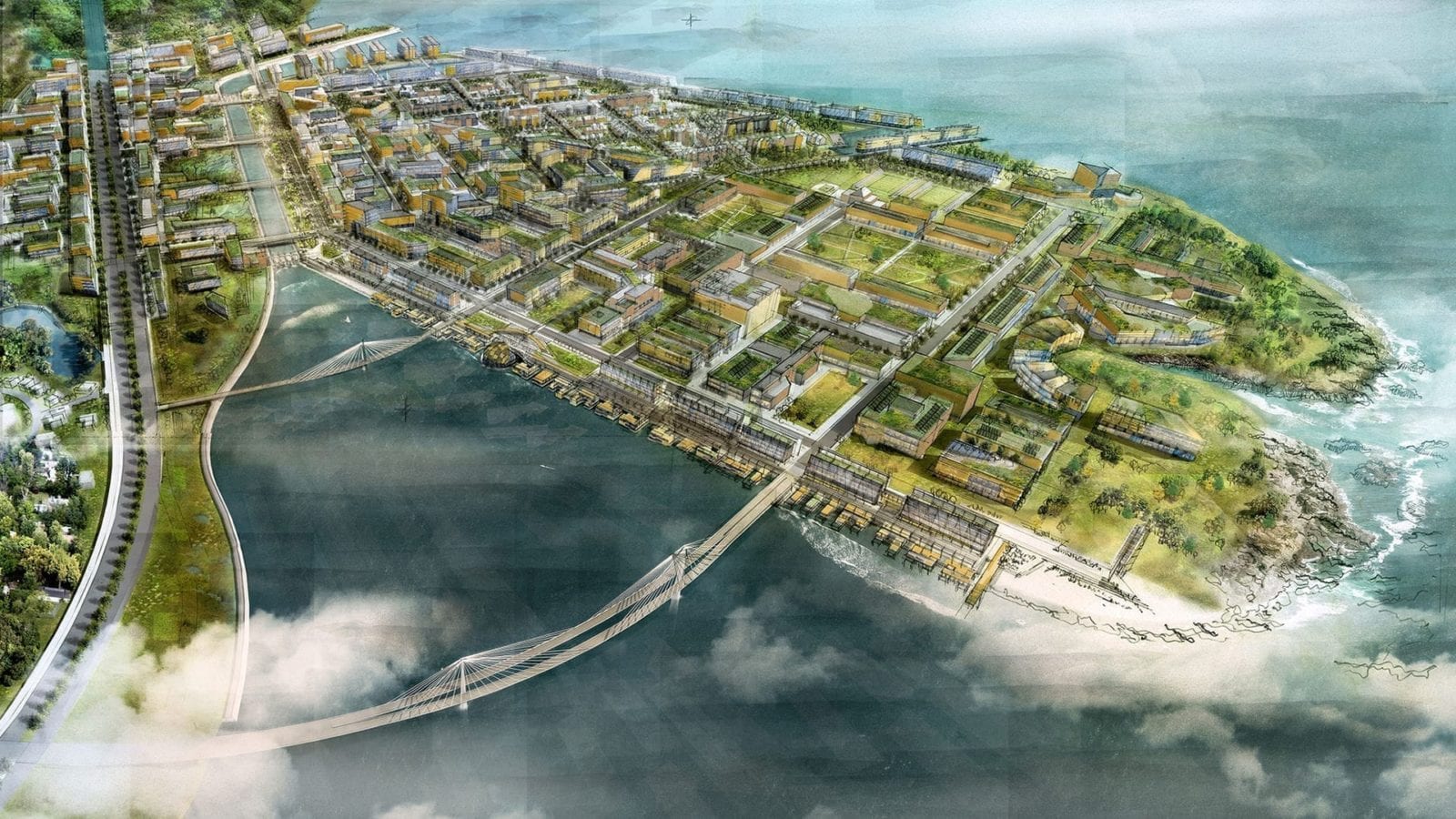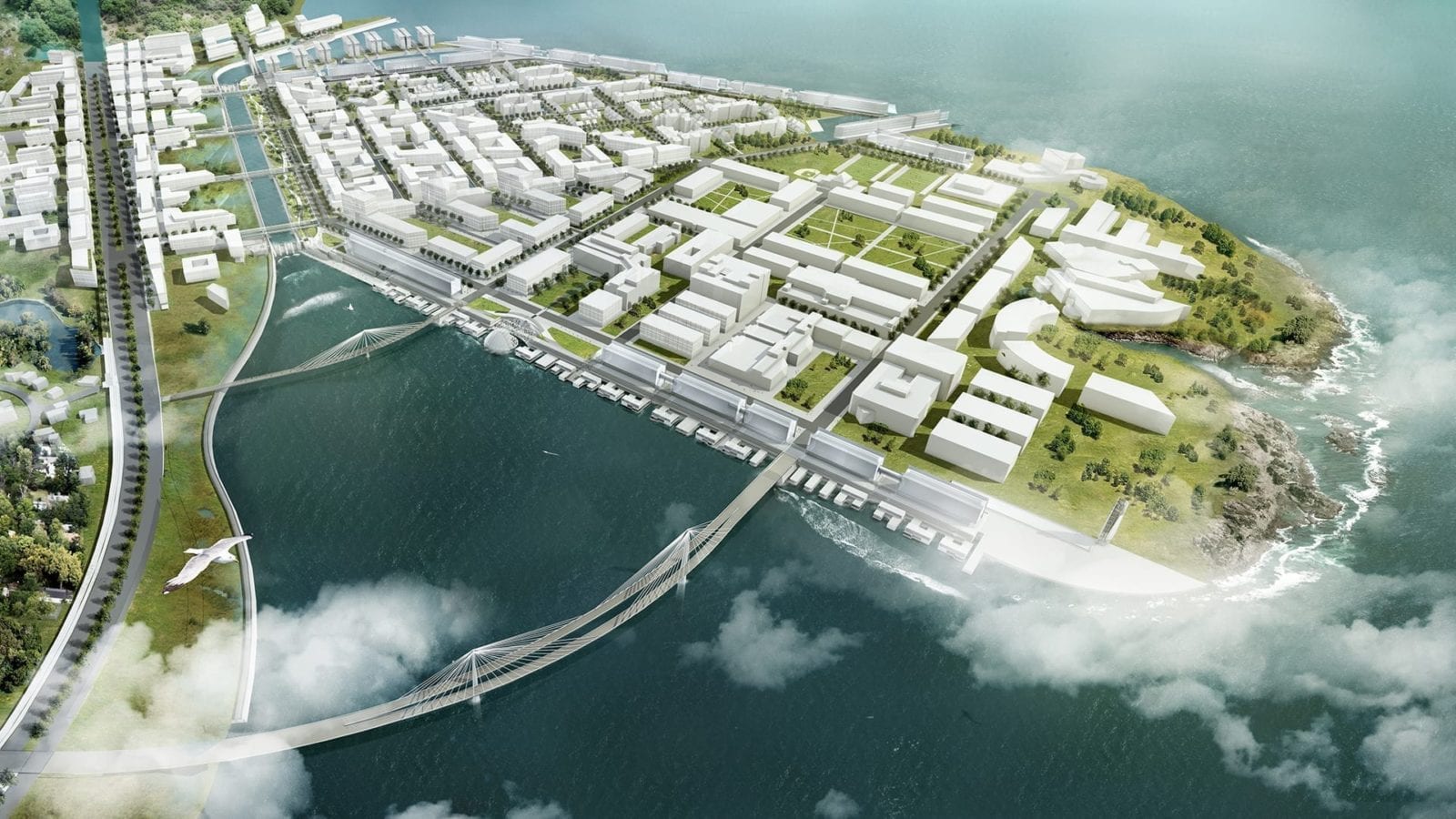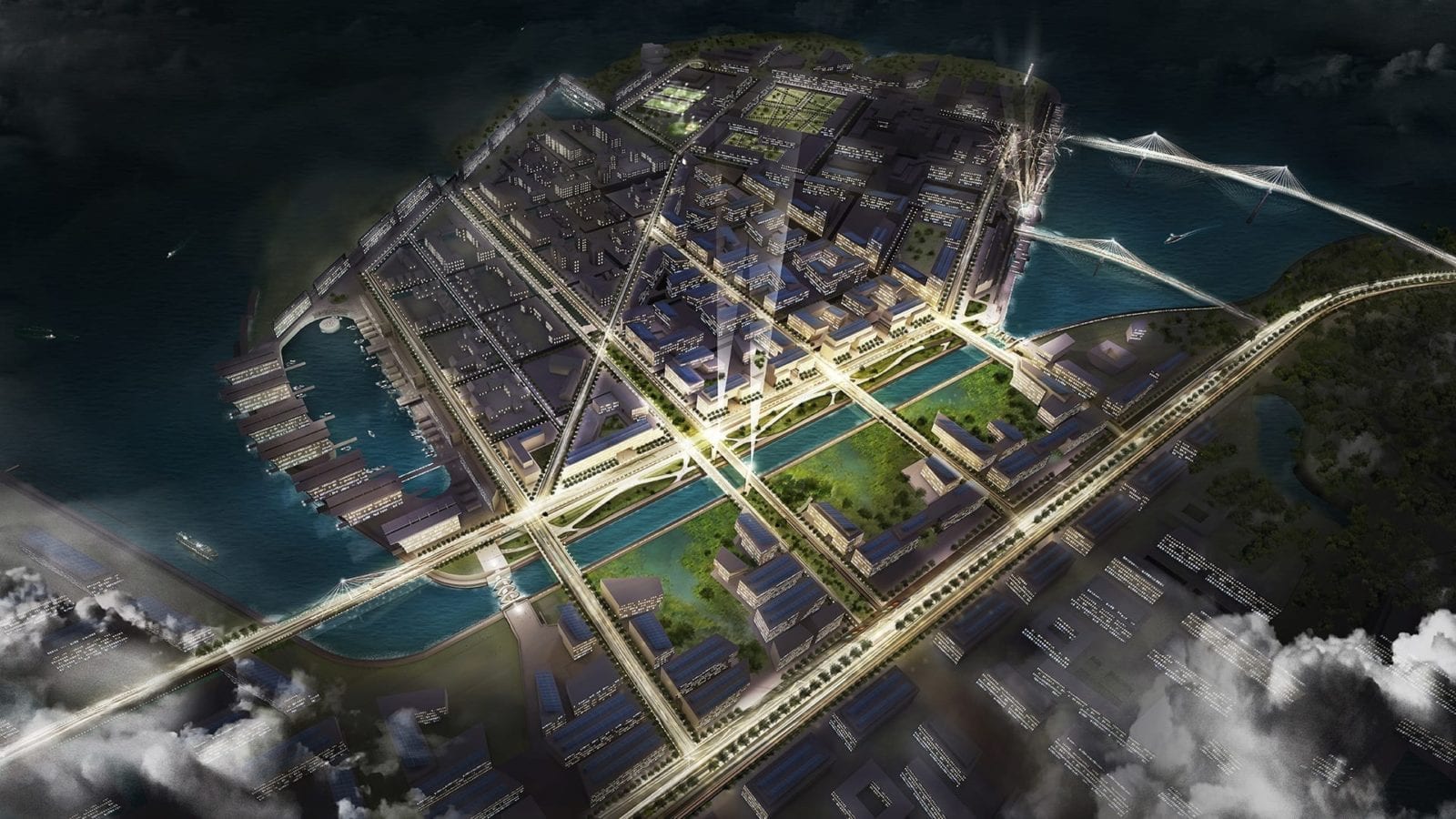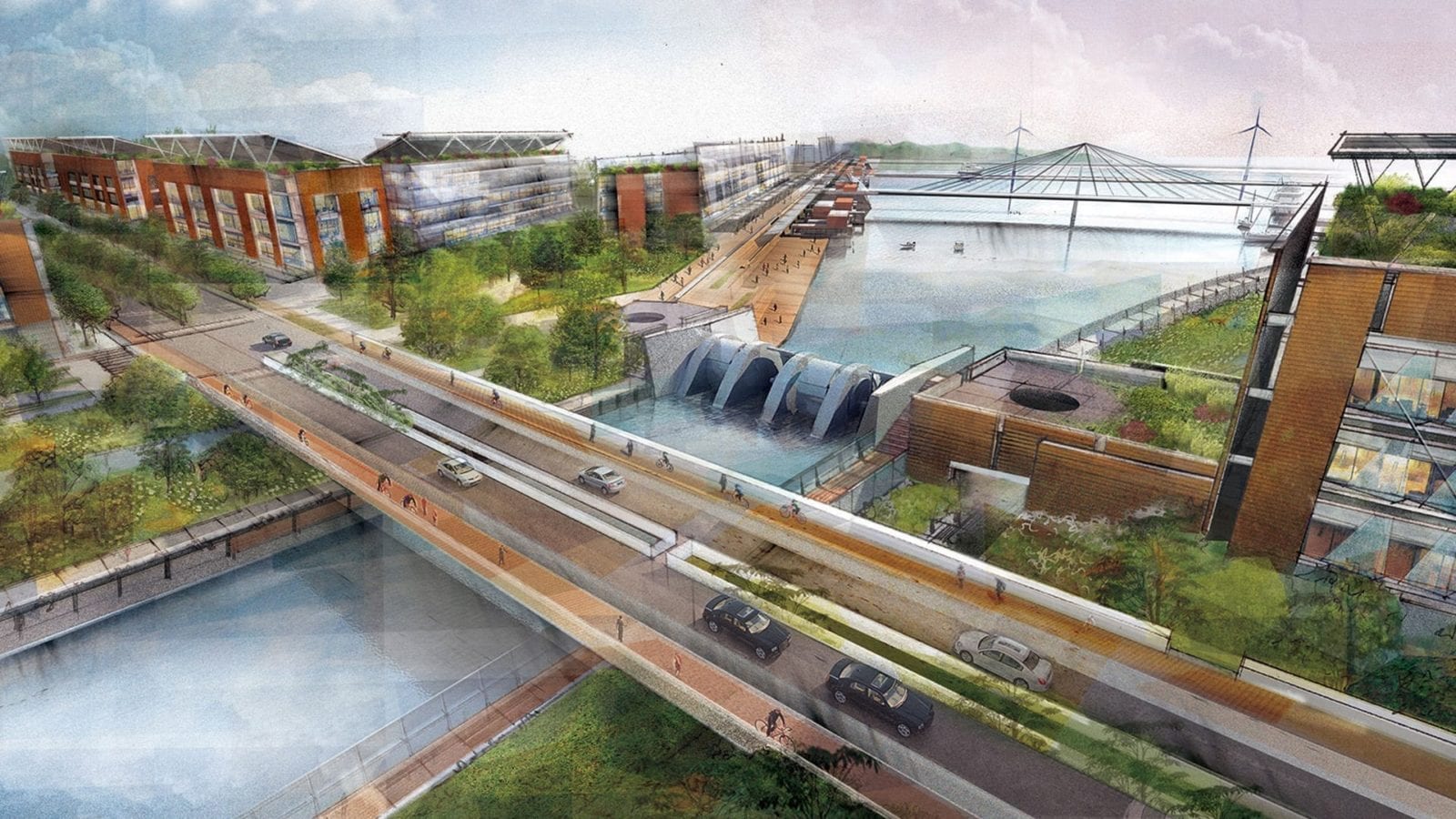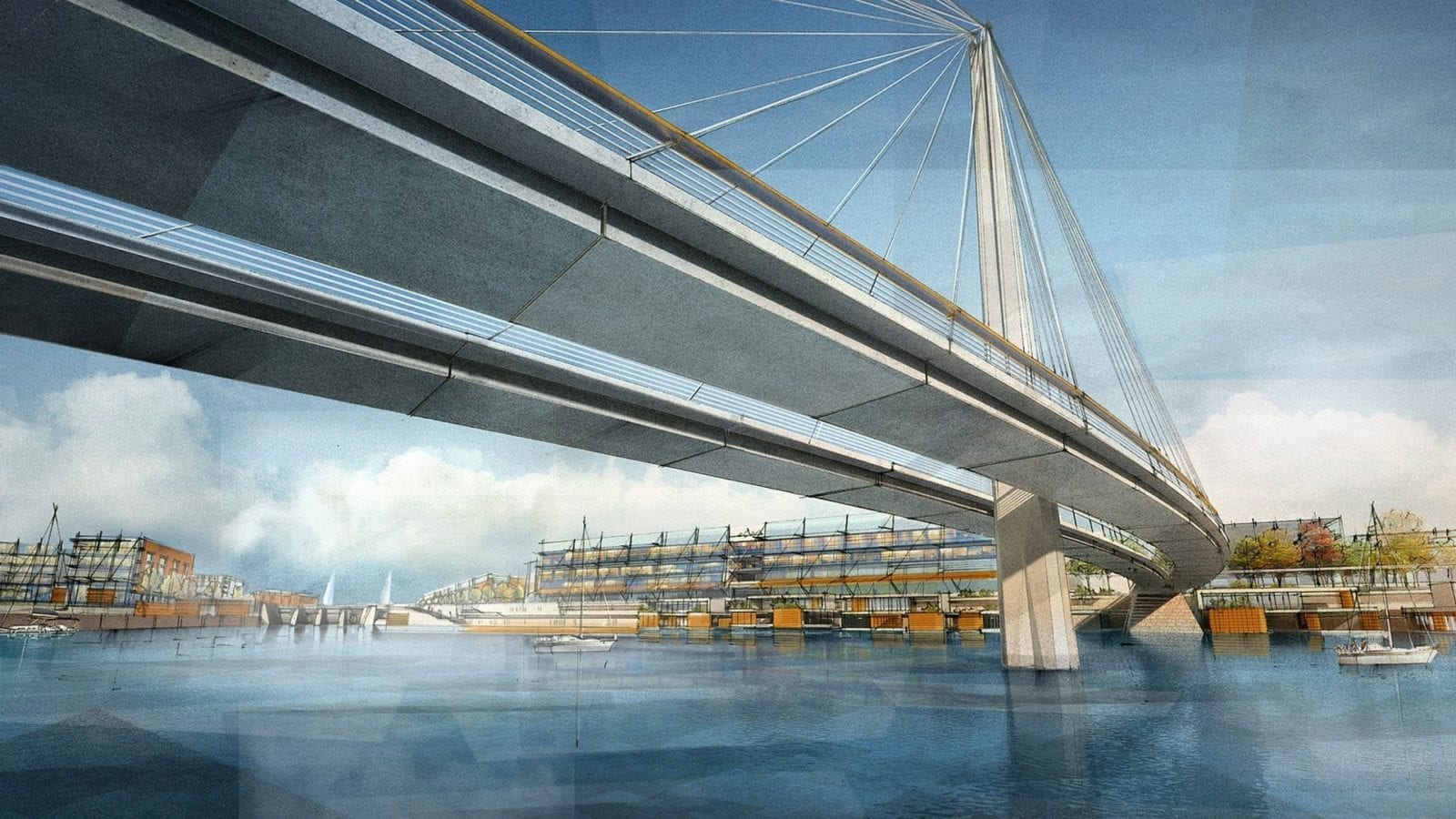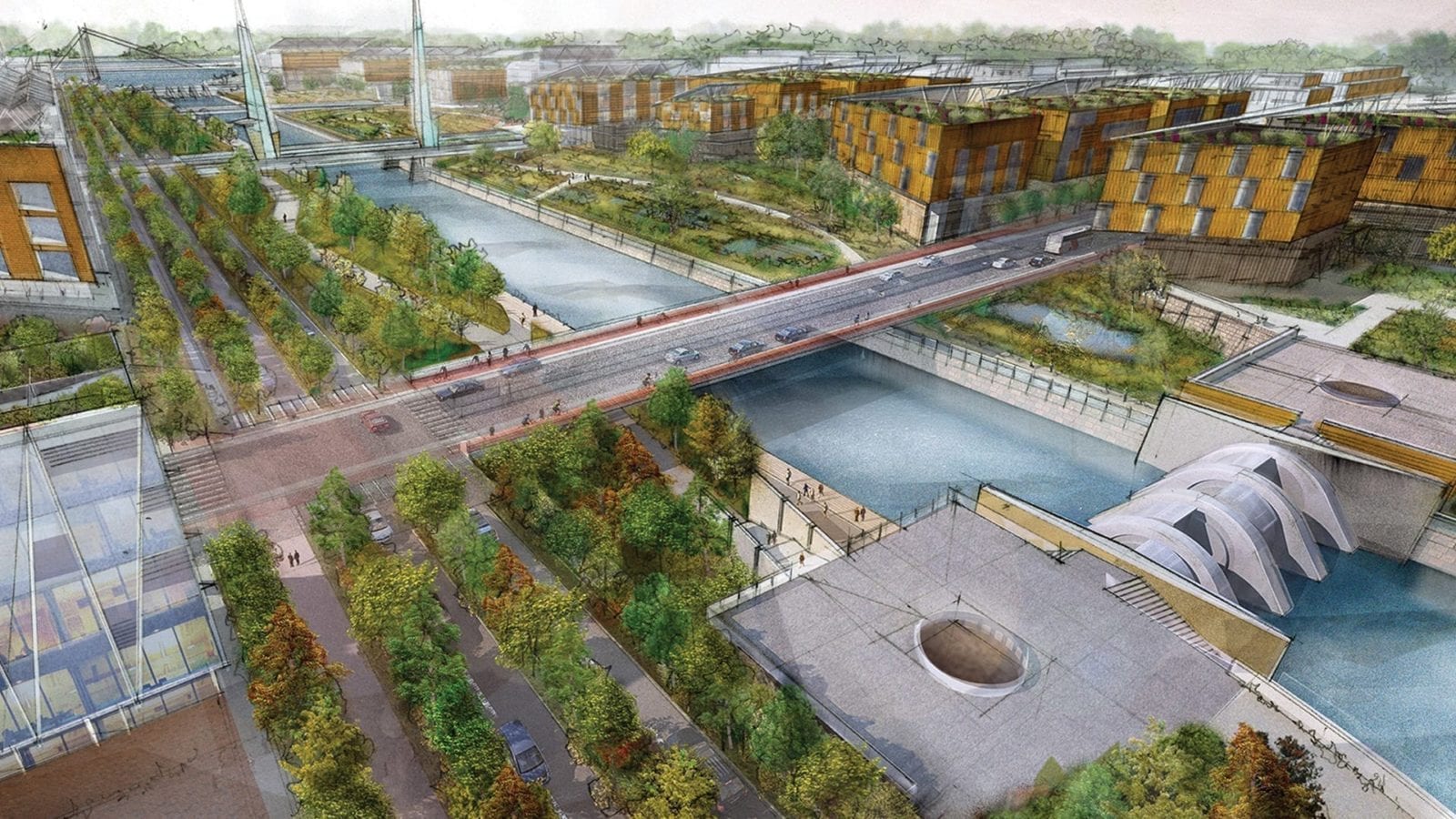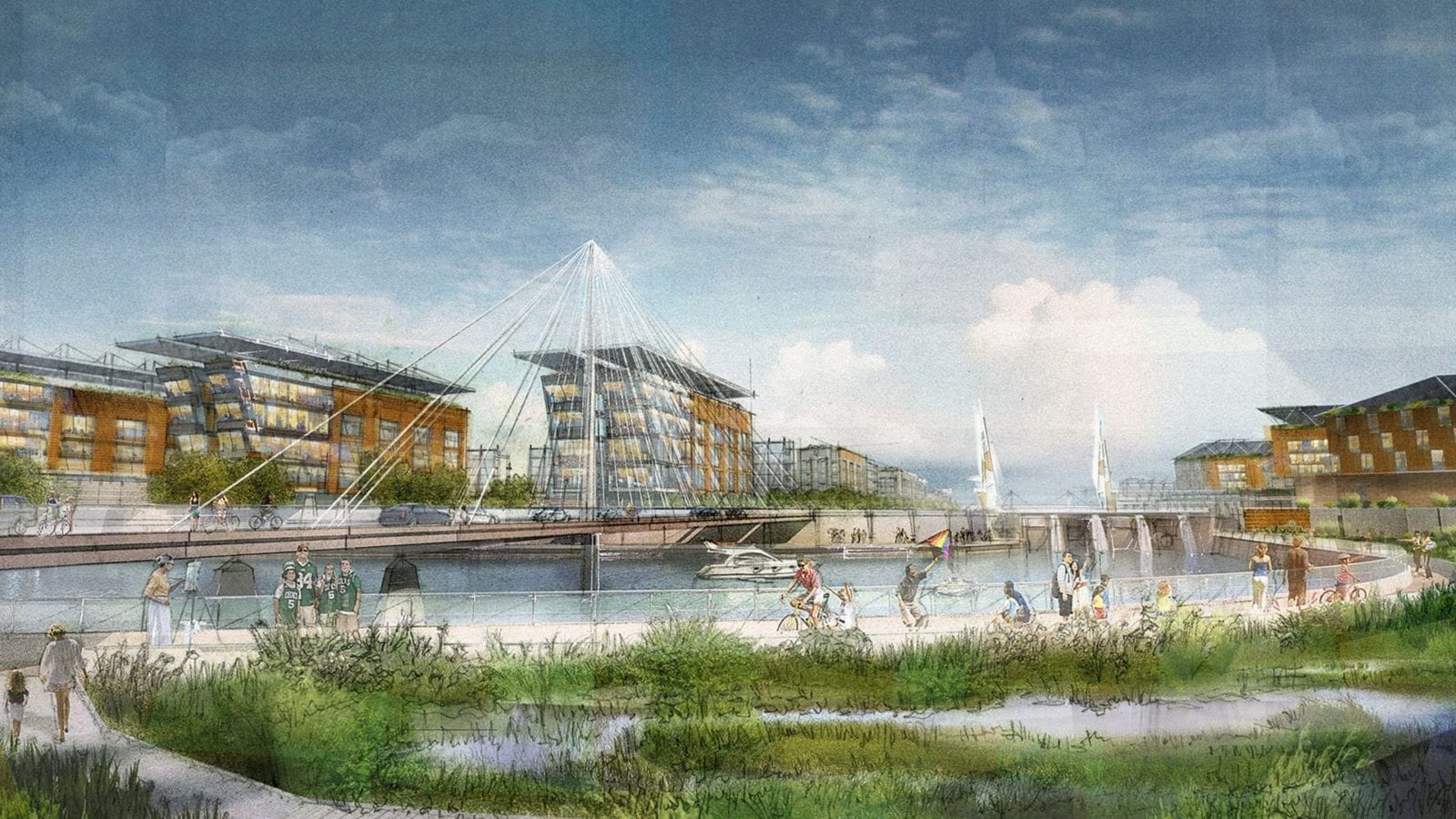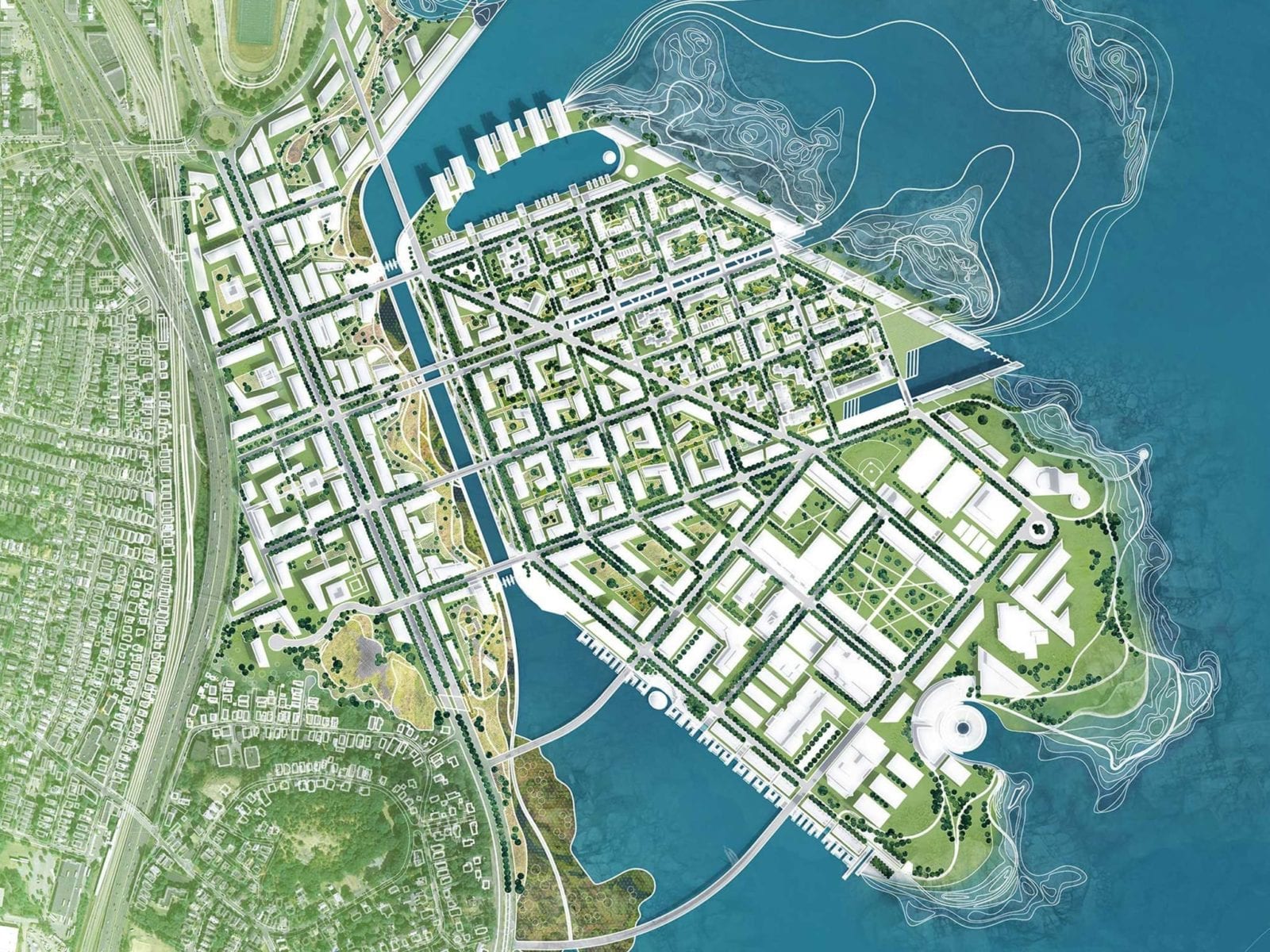Synopsis: This proposal transforms Boston’s Columbia Point peninsula into a self-sustaining, carbon-free net-zero-energy district, powered off the grid by rising tides activating hydroelectric turbines. It thus enhances the resilience of the peninsula and subsequent urban development to sea-level rise caused by climate change, while restoring damaged site ecologies.
Detailed Description: We propose to harness clean energy through hydropower generation from tidal changes and storm surges in low-lying urban areas to shape economically and environmentally resilient, self-sustaining communities. Our proposal offers an array of integrated landscaping, ecological restoration, urban development, and financing strategies for achieving this goal. The latter include public-private partnerships for creating a new energy-producing, amenity-laden infrastructure that reduces risk to communities and investors.
Our proposal draws from a hydropower generation method from the 1640s: Boston’s Mill Creek connected a northern tidal basin (Mill Pond) with the southern harbor (Town Cove), harnessing tidal changes to power strategically located gristmills at the creek’s ends. This historical fusion of landscape and infrastructure energized colonial Boston’s new economy and community. To make the hydroelectric canal possible, we propose cutting a channel through Columbia Point to connect the northern Old Harbor with the southern Savin Hill Cove. The new Morrissey Channel would capture rising sea levels and tidal changes and embrace the ebb and flow of natural water currents to generate hydroelectric energy through advanced turbine technologies, which would power communities and build lively public spaces.
This proposal would also restore 232 hectares of intertidal salt marshes to store 4 million liters of water/acre, reduce tidal wave heights by 90% within 20 meters of the marsh edge, accrete sediment by 0.25 cm/m²/year, and absorb 481 tons of CO2/year. In addition, it would restore 63 acres of oyster/mussel/clam beds as a shoreline buffer filtering 30-50 gallons of water/day/oyster for water quality improvement and sediment reduction. Other ecological benefits would include shoreline re-vegetation for coastal habitats, biodiversity and landscape quality, intertidal pool expansion for rocky habitats, wetland remediation, and courtyard water recycling for stormwater management.
Our innovative design would thus reconnect and reuse fresh and marine water systems through restored fringing salt marshes, shellfish beds (including oyster reefs), tidal flats, pools, and eel-grass beds. Each of these natural habitats would be integrated with human ones (e.g., Living Building Quads), providing comprehensive social and ecological services: primary production, food production, fish and shellfish habitat provision, biogeochemical cycling of nutrients, carbon sequestration, sediment trapping, wave attenuation, shoreline stabilization, water quality improvement, etc.
This ecologically sustainable urban model would assume a new form of resilient urbanism that generates an amenity-rich landscape, restored ecology, and an economically viable, self-sustaining community.

